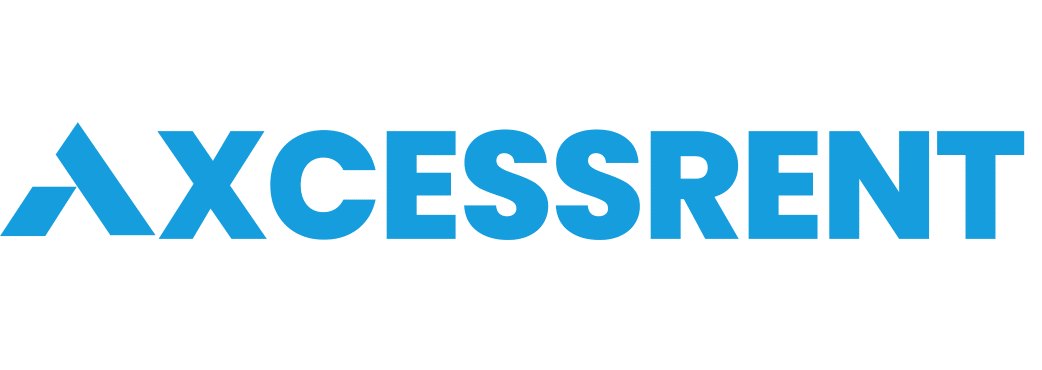Introduction to Financial Planning: Everything I need to know!
What is Financial Planning and Why is It Important?
Financial planning is a comprehensive process that involves setting clear financial goals, creating a budget, managing debt, saving for emergencies, investing for the future, and planning for retirement. It’s essentially a roadmap that guides you towards your financial objectives.
Why is it Important?
- Peace of Mind: Knowing your finances are in order can significantly reduce stress and anxiety.
- Financial Security: A well-structured financial plan can help you build wealth and protect your assets.
- Achieving Goals: Whether it’s buying a home, starting a family, or retiring comfortably, financial planning can help you reach your goals.
- Avoiding Financial Mistakes: By making informed decisions, you can avoid costly mistakes that can derail your financial progress.
Overview of Key Financial Planning Steps
Financial planning is a multi-step process that involves:
- Assessing Your Current Financial Situation:
- Income: Evaluate your current income from various sources (salary, rental income, etc.).
- Expenses: Analyze your monthly and annual expenses, including fixed costs (rent, mortgage, utilities) and variable costs (food, entertainment, transportation).
- Assets: Identify your assets, such as savings accounts, investments, real estate, and vehicles.
- Liabilities: List your debts, including credit card debt, student loans, and mortgages.
- Setting Financial Goals:
- Short-Term Goals: These are goals that can be achieved within a year, such as saving for a vacation or building an emergency fund.
- Long-Term Goals: These are goals that take several years to achieve, such as buying a home, saving for retirement, or funding your children’s education.
- Creating a Budget:
- Track Income and Expenses: Use budgeting tools or apps to monitor your income and expenses.
- Allocate Funds: Divide your income into categories like housing, transportation, food, entertainment, and savings.
- Adjust as Needed: Regularly review your budget and make adjustments to align with your financial goals.
- Managing Debt:
- Prioritize Debts: Focus on paying off high-interest debt first.
- Create a Debt Repayment Plan: Develop a plan to systematically pay off your debts.
- Avoid New Debt: Limit the use of credit cards and other forms of debt.
- Building an Emergency Fund:
- Set a Goal: Aim to save 3-6 months’ worth of living expenses.
- Automate Savings: Set up automatic transfers from your checking account to a savings account.
- Keep it Accessible: Store your emergency fund in a high-yield savings account.
- Investing for the Future:
- Understand Your Risk Tolerance: Assess your comfort level with risk.
- Diversify Your Investments: Spread your investments across different asset classes to reduce risk.
- Consult a Financial Advisor: Seek professional advice to create an investment strategy tailored to your goals.
- Planning for Retirement:
- Estimate Retirement Needs: Determine how much you’ll need to retire comfortably.
- Contribute to Retirement Accounts: Utilize employer-sponsored retirement plans and individual retirement accounts (IRAs).
- Review and Adjust: Regularly review your retirement plan to ensure it’s on track.
- Protecting Your Assets:
- Insurance Coverage: Consider health, life, disability, and property insurance.
- Estate Planning: Create a will and other legal documents to protect your assets and loved ones.
- Reviewing and Adjusting Your Plan:
- Regularly Review: Assess your financial plan at least annually.
- Adjust as Needed: Make adjustments to your plan as your circumstances change.
Identifying Personal Financial Goals and Objectives
The first step in creating a financial plan is to identify your personal financial goals and objectives. These goals should be:
- Specific: Clearly defined and measurable.
- Measurable: Quantifiable with specific targets.
- Achievable: Realistic and attainable.
- Relevant: Aligned with your overall financial goals.
- Time-bound: With specific deadlines.
Examples of Financial Goals:
- Short-Term Goals:
- Build an emergency fund of $10,000 within 6 months.
- Pay off credit card debt of $5,000 by the end of the year.
- Save $2,000 for a vacation in 3 months.
- Long-Term Goals:
- Buy a house worth $300,000 in 5 years.
- Save $1 million for retirement in 20 years.
- Fund your child’s college education.
2. Budgeting and Cash Flow Management
Understanding Income vs. Expenses
Income is the money you earn from various sources. This can include:
- Employment Income: Salary, wages, commissions, bonuses.
- Investment Income: Dividends, interest, capital gains.
- Self-Employment Income: Profits from your own business.
- Rental Income: Income from renting out property.
- Government Benefits: Social Security, unemployment benefits, etc.
Expenses are the costs associated with living. They can be categorized into two types:
- Fixed Expenses: These are costs that remain relatively constant each month, such as:
- Rent or mortgage payments
- Car payments
- Insurance premiums
- Utility bills
- Variable Expenses: These are costs that fluctuate from month to month, such as:
- Groceries
- Dining out
- Entertainment
- Clothing
- Transportation
Creating and Sticking to a Budget
A budget is a financial plan that outlines your income and expenses. It helps you:
- Track your spending: Monitor your spending habits to identify areas where you can cut back.
- Set financial goals: Allocate funds towards specific goals, such as saving for a down payment or retirement.
- Reduce financial stress: Knowing where your money is going can help alleviate anxiety about finances.
Steps to Create a Budget:
- Track Your Income and Expenses: For a month, record all your income and expenses, no matter how small. Use a budgeting app, spreadsheet, or a simple notebook.
- Categorize Expenses: Group your expenses into categories like housing, transportation, food, entertainment, and savings.
- Set Spending Limits: Assign a specific amount of money to each category based on your income and financial goals.
- Review and Adjust: Regularly review your budget to ensure it’s working for you. Make adjustments as needed.
Tips for Sticking to Your Budget:
- Automate Your Savings: Set up automatic transfers to your savings account.
- Use the Envelope System: Allocate cash for specific categories and use it wisely.
- Avoid Impulse Purchases: Wait 24 hours before making a significant purchase.
- Track Your Spending: Use budgeting apps or spreadsheets to monitor your spending.
- Reward Yourself: Celebrate your financial successes to stay motivated.
Tools and Strategies for Cash Flow Management
Cash flow management involves monitoring the inflow and outflow of money to ensure you have enough to cover your expenses. Here are some tools and strategies:
Tools:
- Budgeting Apps: Use apps like Mint, YNAB, or PocketGuard to track your spending and create budgets.
- Spreadsheets: Create a spreadsheet to track your income, expenses, and net worth.
- Financial Calculators: Use calculators to estimate future values of investments or loan payments.
Strategies:
- Pay Yourself First: Set aside a portion of your income for savings and investments.
- Reduce Unnecessary Expenses: Cut back on non-essential expenses like dining out or subscriptions.
- Negotiate Bills: Try to negotiate lower rates for services like cable, internet, or insurance.
- Consider Side Hustles: Earn extra income to boost your cash flow.
- Emergency Fund: Build an emergency fund to cover unexpected expenses.
- Debt Management: Create a plan to pay off high-interest debt.
- Regular Reviews: Regularly review your financial situation and adjust your budget as needed.
3. Building an Emergency Fund
Importance of Emergency Savings
An emergency fund is a crucial financial safety net that can protect you from unexpected financial setbacks. Some common reasons to tap into an emergency fund include:
- Job Loss: Unexpected job loss can leave you without income for an extended period.
- Medical Emergencies: Unforeseen medical expenses can quickly drain your savings.
- Car Repairs: Major car repairs can be costly and inconvenient.
- Home Repairs: Home repairs, such as a leaky roof or a broken appliance, can require immediate attention.
- Natural Disasters: Natural disasters like hurricanes, floods, or earthquakes can cause significant financial damage.
How Much Should You Save?
The ideal amount for an emergency fund varies depending on individual circumstances, but a common recommendation is to save three to six months’ worth of living expenses. This amount can provide a cushion to cover unexpected costs and help you maintain financial stability.
Options for Where to Keep an Emergency Fund
Your emergency fund should be easily accessible but not easily spent. Here are some suitable options:
- High-Yield Savings Account:
- Offers a higher interest rate than traditional savings accounts.
- Funds are easily accessible.
- Ideal for short-term savings goals.
- Money Market Account:
- Offers a higher interest rate than a traditional savings account.
- Provides check-writing privileges.
- More flexible than a CD.
- Short-Term Certificate of Deposit (CD):
- Offers a higher interest rate than savings accounts.
- Funds are locked up for a specific period.
- Best for long-term savings goals.
Avoid these options:
- Stock Market Investments: The stock market is volatile, and your emergency fund should be safe from market fluctuations.
- Low-Yield Savings Accounts: These accounts offer minimal interest, so your money won’t grow significantly.
Tips for Prioritizing and Maintaining an Emergency Fund
- Automate Your Savings: Set up automatic transfers from your checking account to your savings account.
- Pay Yourself First: Treat your emergency fund as a non-negotiable expense.
- Keep It Separate: Keep your emergency fund in a separate account to avoid temptation.
- Review and Adjust: Regularly review your emergency fund and adjust your savings goal as needed.
- Don’t Dip Into It for Non-Emergencies: Use your emergency fund only for true emergencies.
- Consider a Rainy Day Fund: In addition to your emergency fund, consider creating a smaller “rainy day fund” for minor unexpected expenses, such as car repairs or medical bills.
4. Debt Management and Reduction Strategies
Types of Debt: Good Debt vs. Bad Debt
Understanding the difference between good debt and bad debt is crucial for effective debt management.
Good Debt:
- Purposeful Borrowing: Good debt is typically incurred for investments that can increase your net worth over time.
- Long-Term Benefits: The benefits of good debt often outweigh the costs of borrowing.
- Examples:
- Student Loans: Investing in education can lead to higher earning potential.
- Mortgage Loans: Owning a home can provide stability and appreciation.
- Business Loans: Investing in a business can generate income and create wealth.
Bad Debt:
- Consumptive Borrowing: Bad debt is often used for immediate consumption and can lead to financial stress.
- High-Interest Rates: Bad debt typically carries high-interest rates, which can quickly accumulate.
- Examples:
- Credit Card Debt: Unpaid balances can lead to significant interest charges.
- Payday Loans: These short-term loans have extremely high interest rates.
- Auto Loans: While necessary for transportation, excessive borrowing can strain finances.
Strategies for Paying Off Debt: Snowball vs. Avalanche Methods
- Snowball Method:
- Prioritize Small Debts: Focus on paying off the smallest debt first, regardless of the interest rate.
- Gain Momentum: As you pay off each debt, you’ll gain momentum and motivation.
- Psychological Benefits: This method can be emotionally satisfying as you quickly eliminate debts.
- Best for Motivation: If you need the psychological boost of seeing quick wins, the snowball method might be a good fit.
- Avalanche Method:
- Target High-Interest Debts: Prioritize paying off the debt with the highest interest rate first.
- Minimize Interest Costs: By tackling high-interest debts, you’ll save money on interest charges.
- Long-Term Financial Benefits: This method can save you significant money in the long run.
- Best for Financial Efficiency: If you’re focused on minimizing interest costs, the avalanche method is the way to go.
Tips for Avoiding Future Debt and Maintaining Financial Discipline
- Create a Realistic Budget: A well-crafted budget helps you track income and expenses, identify areas for savings, and avoid overspending.
- Live Below Your Means: Prioritize needs over wants and avoid lifestyle inflation.
- Emergency Fund: Build an emergency fund to cover unexpected expenses and avoid relying on credit.
- Mindful Spending: Be conscious of your spending habits and avoid impulse purchases.
- Use Credit Cards Wisely: Only charge what you can afford to pay off in full each month.
- Consider Debt Consolidation: Combine multiple debts into a single loan with a lower interest rate.
- Seek Professional Help: If you’re struggling with debt, consult with a credit counselor or financial advisor.
5. Saving for Major Life Goals
Saving for major life goals is a crucial aspect of financial planning. By setting clear goals and implementing effective saving strategies, you can work towards achieving your dreams.
Planning for Life Events
Education:
- 529 Plans: These tax-advantaged savings plans are specifically designed to help save for future education costs. Contributions to 529 plans are often tax-deductible, and earnings grow tax-deferred.
- Coverdell ESAs: These are another type of tax-advantaged savings plan, but they offer more flexibility in terms of eligible expenses and investment options.
Marriage:
- Emergency Fund: Having a solid emergency fund can help cover unexpected expenses that may arise, such as medical bills or job loss.
- Budgeting: Creating a joint budget can help you and your spouse track income and expenses, allocate funds for savings and debt repayment, and make informed financial decisions together.
- Debt Management: Prioritizing the repayment of high-interest debt can free up more money for savings and other financial goals.
Children:
- Childcare Costs: Factor in the cost of childcare, which can be a significant expense, especially for working parents.
- College Savings: Start saving early for your child’s future education. Consider using 529 plans or other tax-advantaged savings vehicles.
- Life Insurance: Acquiring life insurance can provide financial security for your family in the event of your untimely death.
Homeownership:
- Down Payment Savings: Set a specific savings goal for your down payment and create a realistic timeline to achieve it.
- Mortgage Prepayment: Consider making extra payments on your mortgage to reduce the loan term and interest costs.
- Homeowner’s Insurance: Budget for homeowner’s insurance to protect your investment in case of damage or loss.
Establishing Savings Goals and Timeframes
To effectively save for your goals, establish clear and specific goals with a timeline.
- Set SMART Goals: Ensure your goals are Specific, Measurable, Achievable, Relevant, and Time-bound. For example, instead of “Save for a down payment,” set a goal like “Save $20,000 for a down payment within two years.”
- Break Down Large Goals: Divide larger goals into smaller, more manageable steps. For instance, if your goal is to save $10,000, break it down into monthly savings targets.
- Track Your Progress: Monitor your savings progress regularly to stay motivated. Use budgeting tools or spreadsheets to track your income, expenses, and savings.
Tools and Accounts for Goal-Specific Savings
- High-Yield Savings Accounts: Ideal for short-term goals like emergency funds or down payments. These accounts offer higher interest rates than traditional savings accounts, allowing your money to grow faster.
- Certificate of Deposit (CD): Offers higher interest rates than savings accounts, but your money is locked up for a specific period. CDs are suitable for medium-term savings goals.
- 529 Plans: Tax-advantaged savings plans for education expenses. Contributions to 529 plans may be tax-deductible, and earnings grow tax-deferred.
- Individual Retirement Accounts (IRAs): Tax-advantaged retirement savings accounts. IRAs can be a great way to save for retirement while also potentially reducing your current tax liability.
- Brokerage Accounts: These accounts allow you to invest in a variety of assets, including stocks, bonds, and mutual funds. Brokerage accounts can be used for long-term savings goals like retirement or college education.
6. Retirement Planning Basics
The Importance of Early Retirement Savings
The earlier you start saving for retirement, the more time your money has to grow through compound interest. Compound interest is the interest earned on both your initial investment and the interest it accumulates over time. This exponential growth can significantly boost your retirement savings. By starting early, you can take advantage of this powerful principle and increase your chances of a comfortable retirement.
Overview of Retirement Accounts
Several retirement accounts offer tax advantages and can help you save for the future. Here are some of the most common:
401(k) Plan:
- Employer-Sponsored: Offered by many employers, 401(k) plans allow you to contribute a portion of your paycheck to an investment account.
- Tax-Deferred Growth: Earnings within the account grow tax-deferred, meaning you won’t owe taxes on them until you withdraw the money in retirement.
- Employer Match: Many employers offer matching contributions, which are essentially free money.
Individual Retirement Account (IRA):
- Personal Retirement Account: IRAs allow you to contribute a certain amount of money each year.
- Traditional IRA: Contributions may be tax-deductible, and withdrawals are taxed as ordinary income.
- Roth IRA: Contributions are made with after-tax dollars, but qualified withdrawals are tax-free.
- Flexibility: IRAs offer more flexibility in investment choices compared to 401(k) plans.
Pension Plans:
- Employer-Sponsored: Pension plans are retirement plans offered by employers.
- Defined Benefit Plans: These plans provide a specific benefit amount upon retirement, often based on your salary and years of service.
- Defined Contribution Plans: These plans, like 401(k) plans, require you to contribute to your account, and the benefit amount depends on your contributions and investment performance.
Creating a Target Retirement Income and How to Achieve It
To determine your target retirement income, consider your desired lifestyle, expected expenses, and potential sources of income, such as Social Security. A financial advisor can help you estimate your retirement needs and create a personalized retirement plan.
Here are some strategies to achieve your target retirement income:
- Start Early: The earlier you start saving, the more time your money has to grow.
- Maximize Employer Contributions: Take full advantage of any employer matching contributions to your 401(k) plan.
- Diversify Your Investments: Spread your investments across different asset classes, such as stocks, bonds, and mutual funds, to reduce risk.
- Consider a Financial Advisor: A financial advisor can provide expert advice on investment strategies, retirement planning, and other financial matters.
- Regularly Review and Adjust: As your financial situation and goals change, review and adjust your retirement plan accordingly.
7. Investment Basics and Strategies
Understanding Investment Types
Investing your money can help it grow over time. Here are some common investment types:
- Stocks: Represent ownership in a company. Investing in stocks can offer the potential for high returns, but it also comes with higher risk.
- Bonds: Debt securities issued by corporations or governments. Bonds typically offer lower returns than stocks but are generally considered less risky.
- Mutual Funds: Pooled investments that allow you to invest in a diversified portfolio of stocks, bonds, or other assets. Mutual funds are managed by professional fund managers.
- Real Estate: Investing in physical property, such as rental properties or real estate investment trusts (REITs). Real estate can offer both income and appreciation potential.
Risk Tolerance and Diversification
Risk Tolerance: Your risk tolerance is your ability to withstand market fluctuations. It’s important to assess your risk tolerance before investing. If you’re risk-averse, you may prefer less volatile investments like bonds or mutual funds with a conservative investment strategy. If you’re more comfortable with risk, you may consider investing in stocks or higher-risk investment options.
Diversification: Diversification involves spreading your investments across various asset classes to reduce risk. By diversifying your portfolio, you can minimize the impact of poor performance in any one investment. A well-diversified portfolio may include a mix of stocks, bonds, mutual funds, and real estate.
Developing a Long-Term Investment Strategy
To develop a long-term investment strategy, consider the following:
- Set Clear Goals: Define your investment goals, whether it’s saving for retirement, buying a home, or funding your child’s education.
- Determine Your Risk Tolerance: Assess your comfort level with risk and choose investments that align with your risk tolerance.
- Create a Diversified Portfolio: Spread your investments across different asset classes to reduce risk.
- Rebalance Your Portfolio: Regularly review your portfolio and rebalance it as needed to maintain your desired asset allocation.
- Consider Professional Advice: If you need guidance, consult with a financial advisor to create a personalized investment plan.
8. Tax Planning and Strategies
Understanding How Taxes Affect Income, Investments, and Estate Planning
Income Taxes:
- Progressive Tax System: The U.S. federal income tax system is progressive, meaning that as your income increases, your tax rate also increases.
- Tax Brackets: Your income is divided into different tax brackets, each with its own tax rate. As your income increases, it moves into higher tax brackets, resulting in a higher overall tax rate.
- Tax Deductions and Credits:
- Deductions: Reduce your taxable income. Common deductions include mortgage interest, charitable contributions, and state and local taxes.
- Credits: Directly reduce your tax liability. Common credits include the child tax credit, the earned income tax credit, and the American Opportunity Tax Credit.
Investment Taxes:
- Capital Gains Tax: When you sell an investment for more than you paid for it, you’ll owe capital gains tax on the profit. The rate depends on your income level and how long you held the investment.
- Dividend Taxes: Dividends from stocks and mutual funds are generally taxed as ordinary income. However, qualified dividends may be taxed at a lower rate.
- Tax-Advantaged Accounts: These accounts offer tax benefits, such as tax-deferred growth or tax-free withdrawals. Examples include 401(k) plans, IRAs, and Health Savings Accounts (HSAs).
Estate Taxes:
- Estate Tax: A federal tax imposed on the value of your estate when you pass away. It applies to estates exceeding a certain threshold.
- Inheritance Tax: Some states impose an inheritance tax on the beneficiaries of an estate.
- Estate Planning: By strategically planning your estate, you can minimize estate taxes and ensure your assets are distributed according to your wishes.
Basic Tax-Saving Strategies
- Tax-Advantaged Accounts: Utilize tax-advantaged accounts to reduce your taxable income and grow your savings.
- Deductions: Claim eligible deductions to reduce your taxable income.
- Credits: Take advantage of tax credits to directly reduce your tax liability.
- Tax-Loss Harvesting: Sell losing investments to offset capital gains.
- Consult a Tax Professional: A tax professional can help you identify tax-saving opportunities and ensure you’re taking advantage of all available deductions and credits.
Planning for Future Tax Implications and Reducing Tax Liabilities
- Long-Term Financial Planning: Consider how taxes may impact your long-term financial goals, such as retirement, college savings, and estate planning.
- Diversification: Diversify your investments to spread risk and potentially reduce tax liability.
- Estate Planning: Consult with an estate planning attorney to create a comprehensive estate plan that minimizes estate taxes and protects your assets.
- Regular Reviews: Review your financial situation and tax strategy regularly to ensure it aligns with your goals and adapts to changes in tax laws.
- Consider Tax-Efficient Investing: Invest in tax-efficient funds and strategies to minimize your tax burden.
9. Estate Planning Essentials
Estate planning is a critical process that ensures your assets are distributed according to your wishes, protects your loved ones, and minimizes potential legal and financial complications.
Basics of Wills, Trusts, and Beneficiaries
- Will: A legal document that outlines how you want your assets to be distributed after your death. It names an executor to oversee the distribution process.
- Types of Wills:
- Simple Will: A basic will that outlines your assets and beneficiaries.
- Testamentary Trust Will: Creates a trust after your death to manage assets for beneficiaries.
- Self-Proving Will: A will that is notarized and witnessed, making it easier to probate.
- Types of Wills:
- Trust: A legal arrangement where you transfer assets to a trustee, who manages them for the benefit of beneficiaries.
- Types of Trusts:
- Revocable Living Trust: Allows you to change or revoke the trust during your lifetime.
- Irrevocable Living Trust: Cannot be changed or revoked after it’s created.
- Testamentary Trust: Created after your death through your will.
- Types of Trusts:
- Beneficiary: A person or organization designated to receive assets or benefits from a will, trust, or insurance policy.
Planning for Asset Transfer, Guardianship, and Power of Attorney
- Asset Transfer:
- Beneficiary Designations: Name beneficiaries for retirement accounts, life insurance policies, and bank accounts.
- Title Transfer: Transfer property titles to the desired beneficiaries.
- Digital Assets: Plan for the transfer of digital assets like social media accounts and online documents.
- Guardianship: If you have minor children, appoint a guardian to care for them in case of your incapacity or death.
- Power of Attorney:
- Financial Power of Attorney: Allows someone to manage your financial affairs.
- Healthcare Power of Attorney: Allows someone to make healthcare decisions on your behalf.
Avoiding Probate and Minimizing Estate Taxes
- Probate: A legal process that can be time-consuming, costly, and public.
- Ways to Avoid Probate:
- Living Trusts: Transferring assets to a trust can avoid probate.
- Beneficiary Designations: Naming beneficiaries for assets can bypass probate.
- Joint Ownership: Jointly owning property with right of survivorship can transfer ownership directly to the surviving owner.
- Ways to Avoid Probate:
- Minimizing Estate Taxes:
- Annual Gift Tax Exclusion: Gift assets to individuals below the annual gift tax exclusion limit.
- Charitable Giving: Make charitable donations to reduce your taxable estate.
- Trusts: Use trusts to transfer assets to beneficiaries while minimizing estate taxes.
10. Regular Financial Review and Adaptation
Regularly reviewing and updating your financial plan is a crucial aspect of financial wellness. It ensures that your plan aligns with your evolving goals and circumstances, mitigating potential risks and maximizing opportunities.
Importance of Reviewing and Updating Financial Plans
- Changing Circumstances: Life events such as job changes, marriage, childbirth, or retirement can significantly impact your financial situation. Regular reviews help you adjust your plan accordingly.
- Market Fluctuations: Economic conditions, interest rates, and stock market performance can fluctuate, affecting your investments and savings.
- Tax Law Changes: Tax laws and regulations are subject to change, which can impact your tax liability and planning strategies.
- Personal Goals: Your personal and financial goals may evolve over time. Regular reviews help you stay focused and make necessary adjustments.
Adapting Financial Plans for Life Changes
Here are some key life changes and how they may impact your financial plan:
- Job Change:
- Reassess your income and expenses.
- Review your retirement savings contributions.
- Update your insurance coverage.
- Marriage:
- Combine finances and create a joint budget.
- Review and update estate planning documents.
- Consider consolidating debt.
- Having Children:
- Plan for increased expenses, such as childcare and education costs.
- Review life insurance coverage.
- Consider setting up a college savings fund.
- Purchasing a Home:
- Adjust your budget to account for mortgage payments, property taxes, and home maintenance costs.
- Review your homeowner’s insurance coverage.
- Retirement:
- Develop a comprehensive retirement plan, including Social Security benefits, pension income, and investment withdrawals.
- Create a budget for retirement expenses.
- Consider long-term care planning.
- Health Issues:
- Evaluate health insurance coverage, disability insurance, and long-term care insurance.
- Review your emergency fund and budget to account for potential medical expenses.
Working with Financial Advisors and Other Professionals for Guidance
A financial advisor can provide valuable guidance and support in managing your finances. They can help you with:
- Creating a Financial Plan: Develop a personalized financial plan tailored to your specific goals and risk tolerance.
- Investing: Make informed investment decisions and manage your portfolio.
- Debt Management: Create a plan to pay off debt and improve your credit score.
- Retirement Planning: Estimate your retirement needs and create a retirement savings plan.
- Estate Planning: Develop an estate plan to protect your assets and minimize taxes.
- Tax Planning: Minimize your tax liability through strategic planning and tax-saving strategies.
- Insurance Planning: Review your insurance coverage to ensure you have adequate protection.







